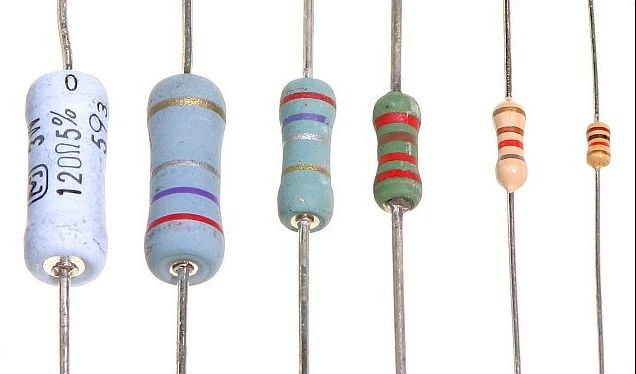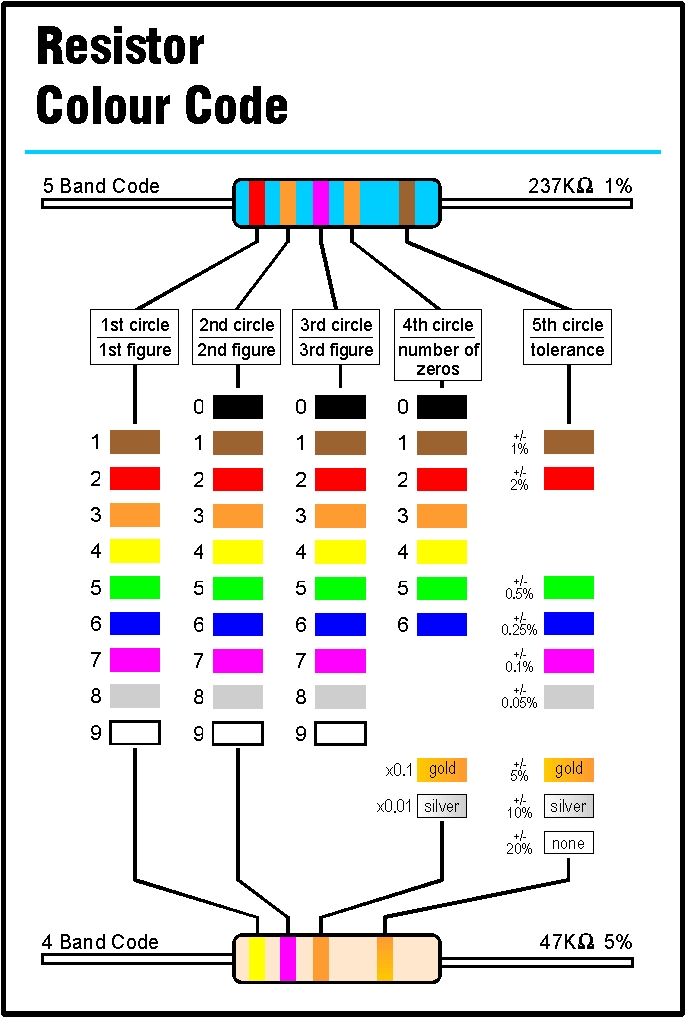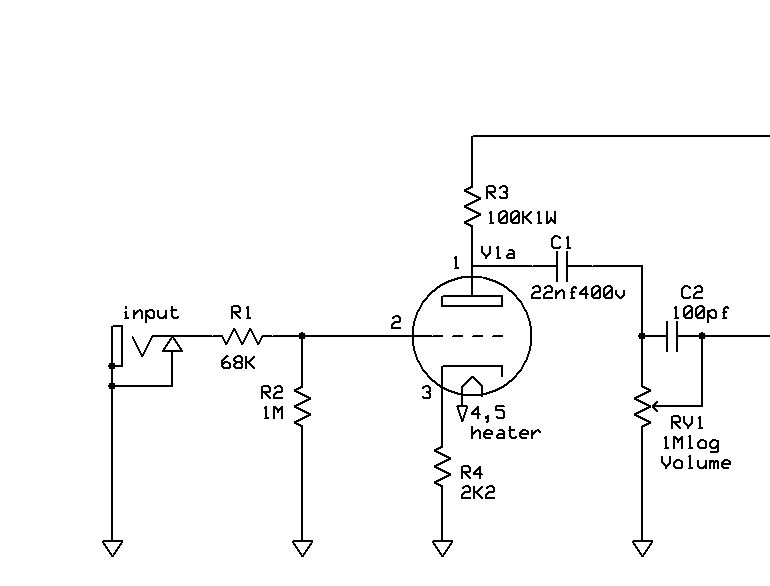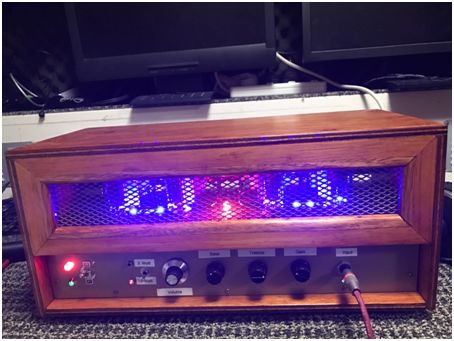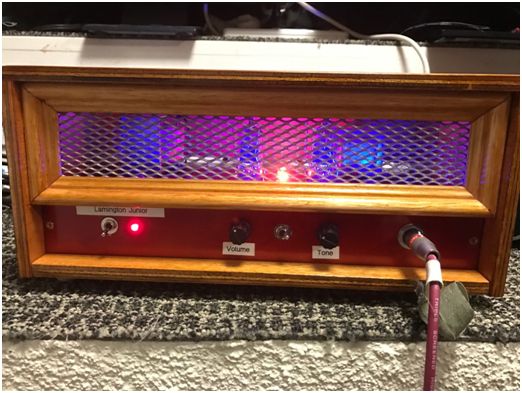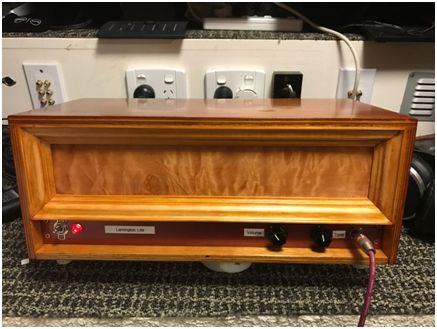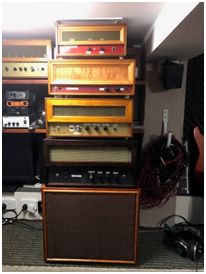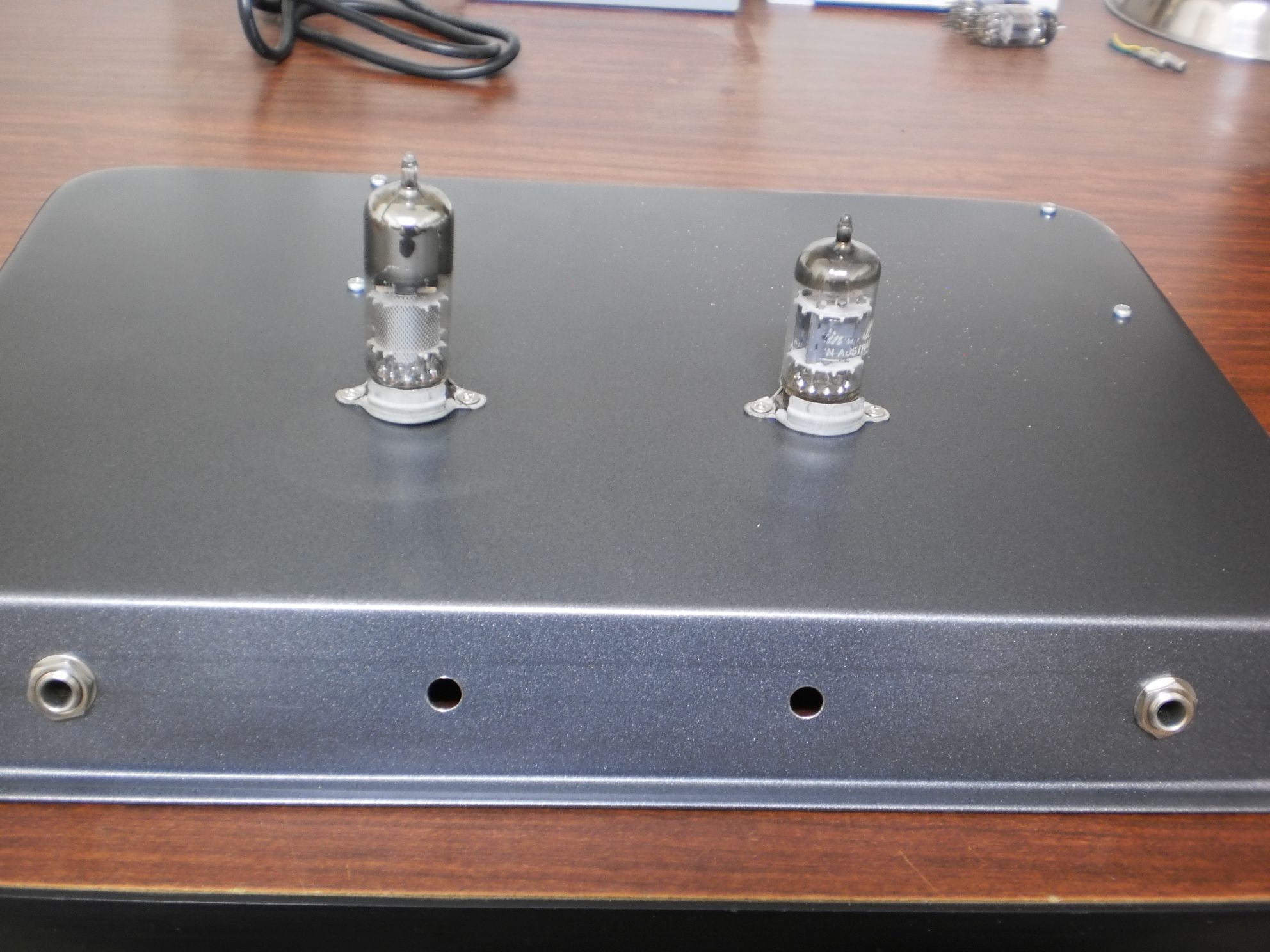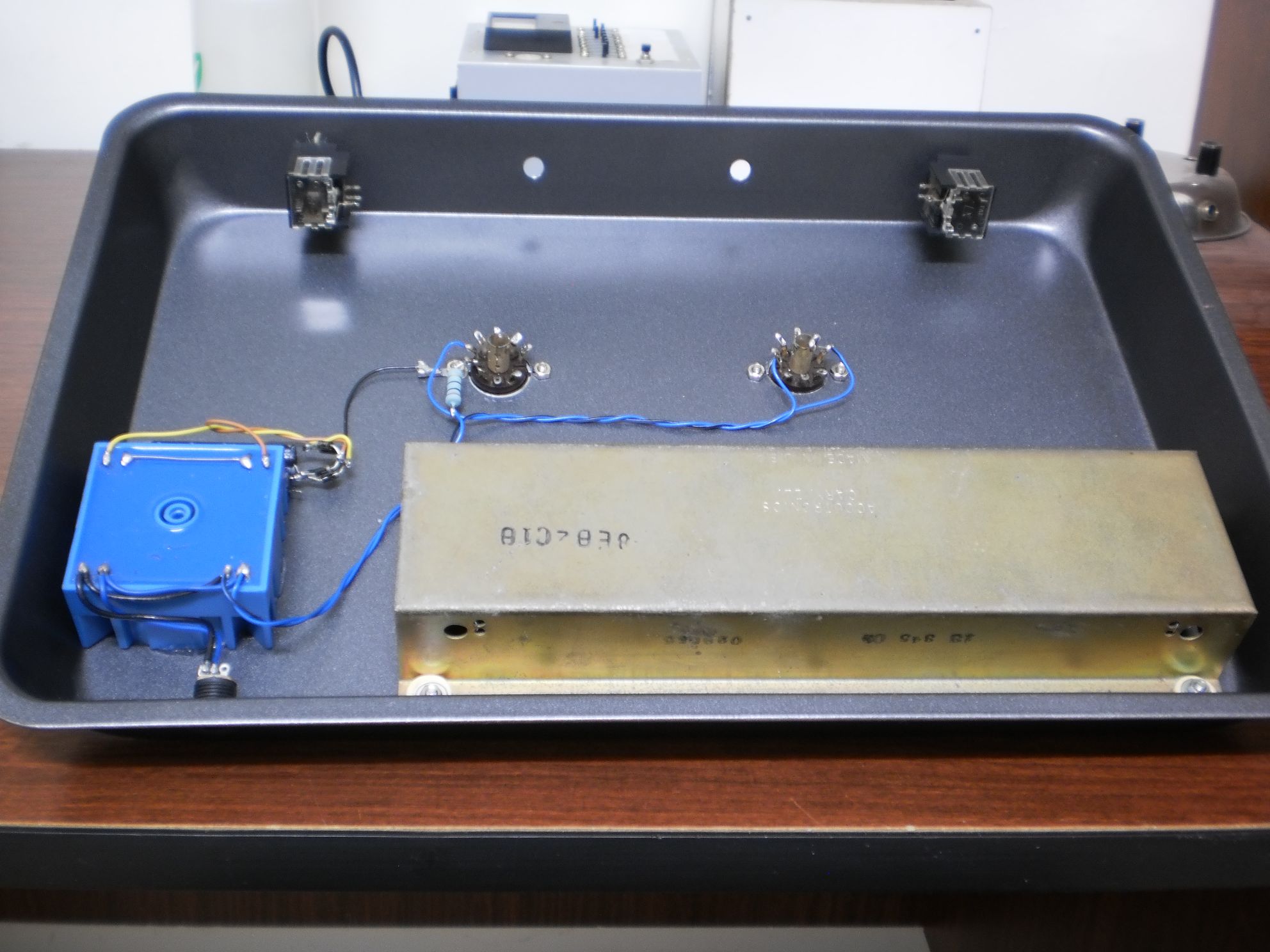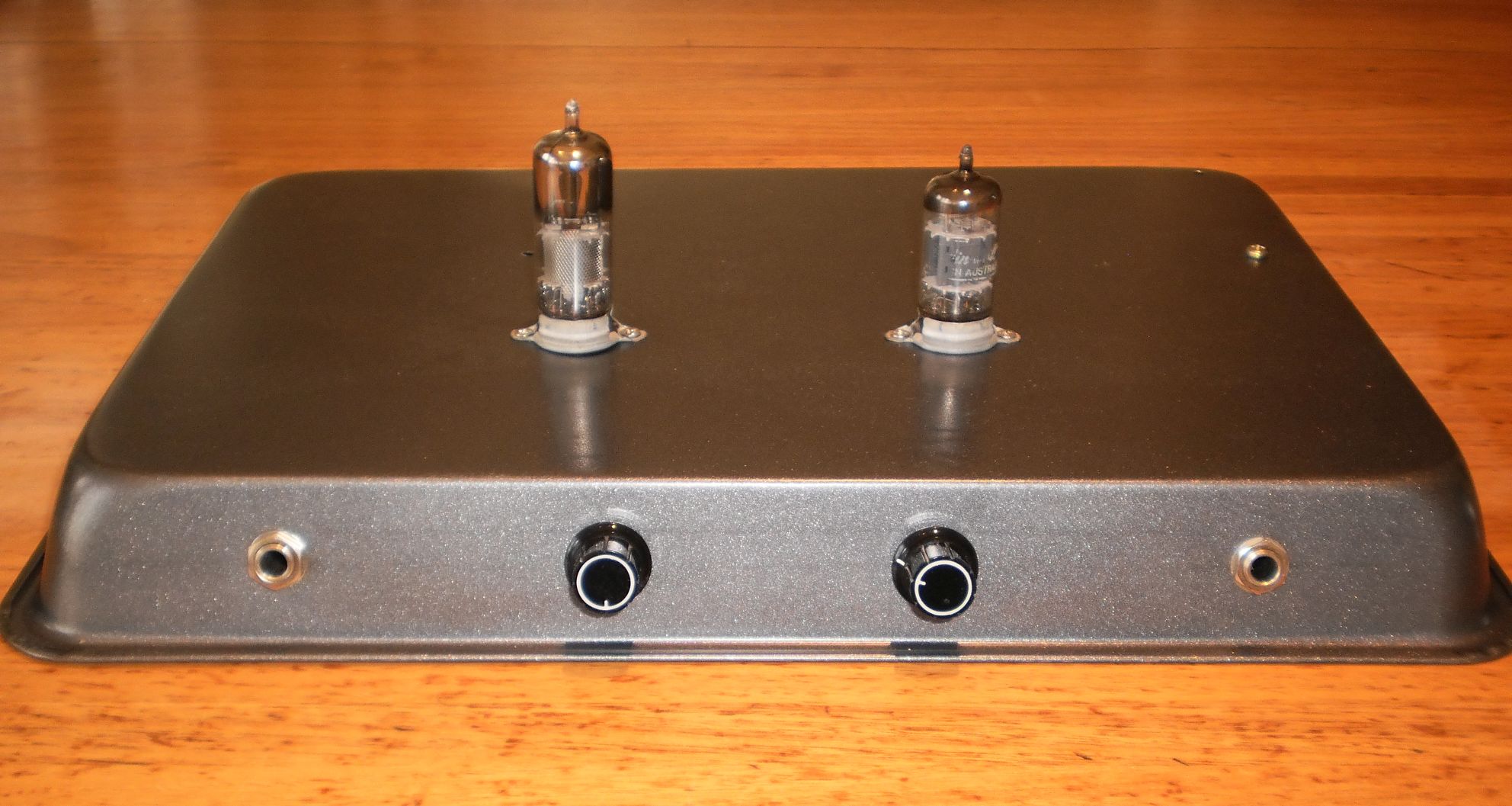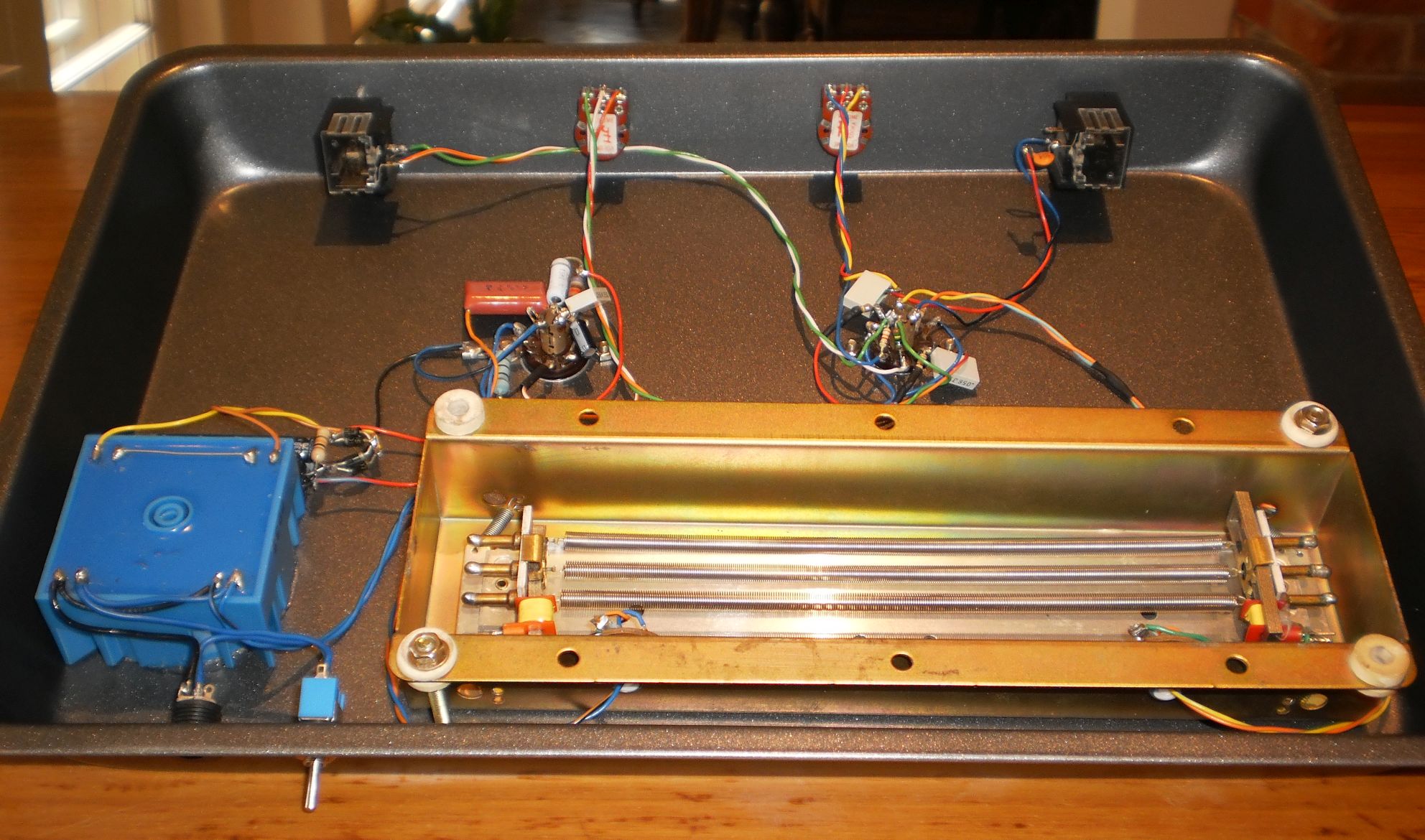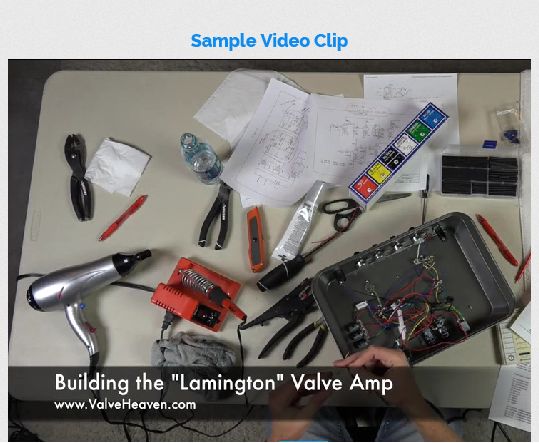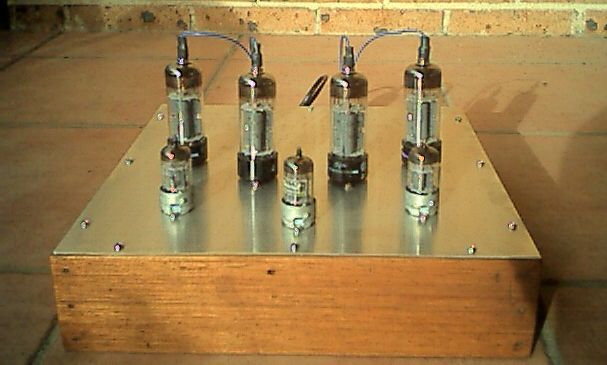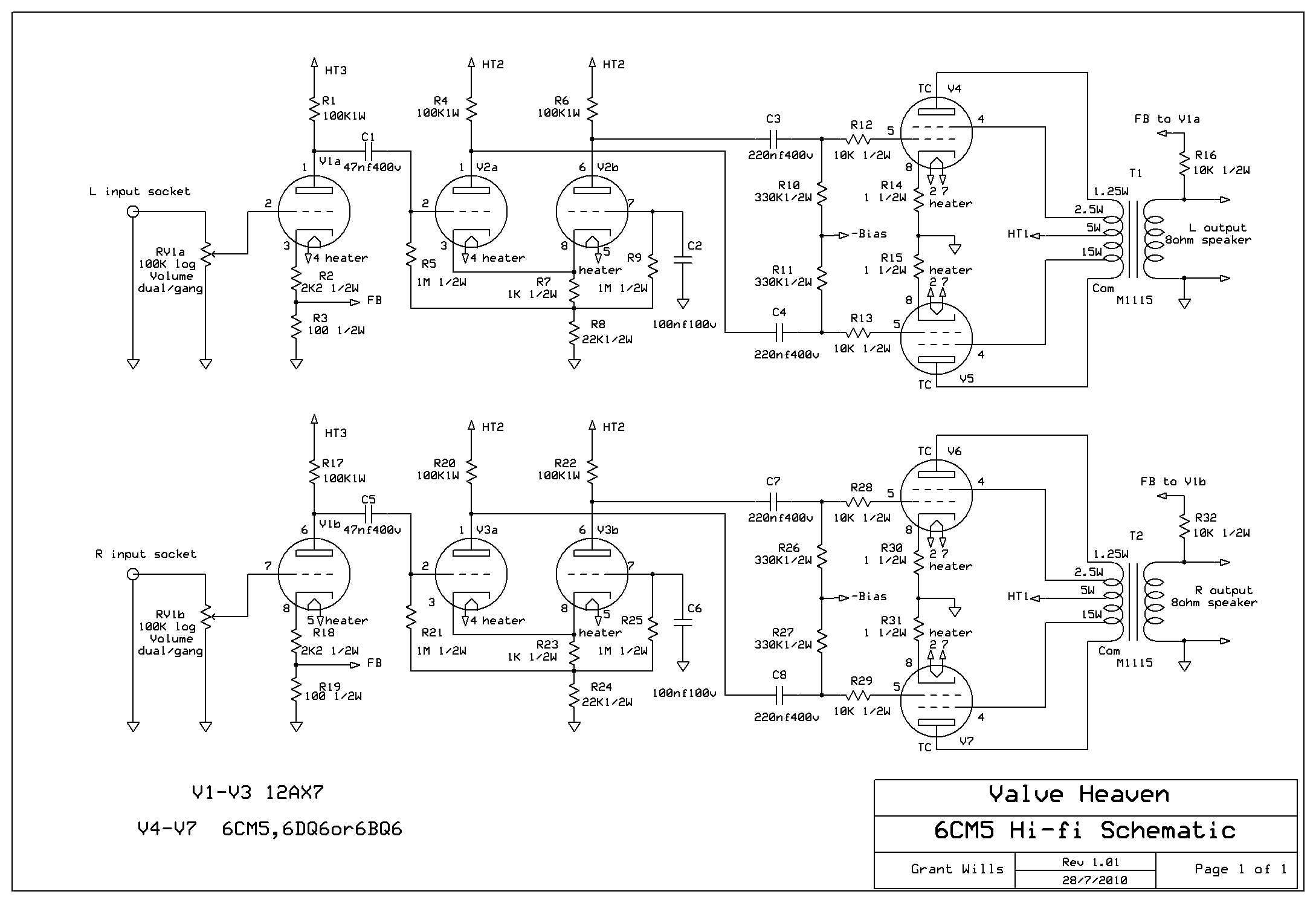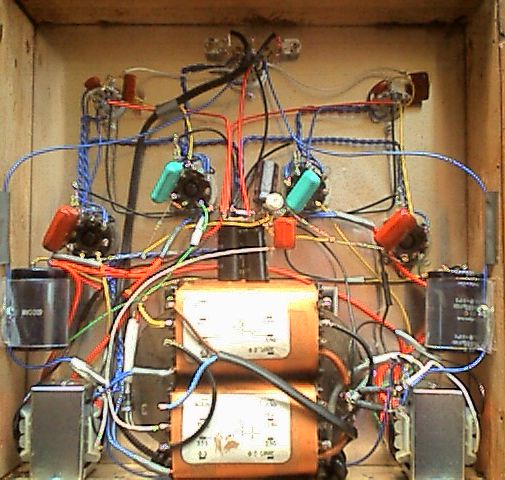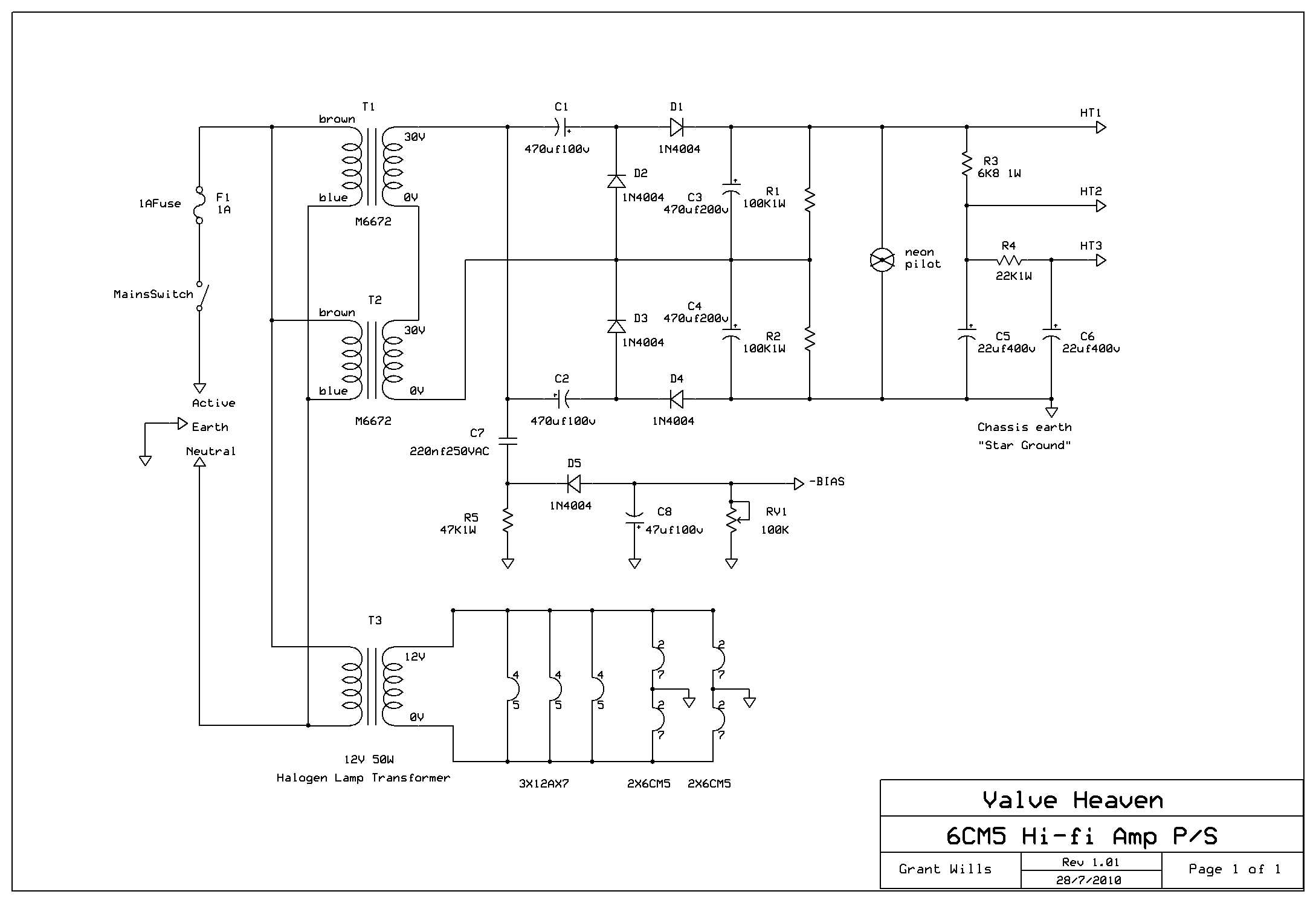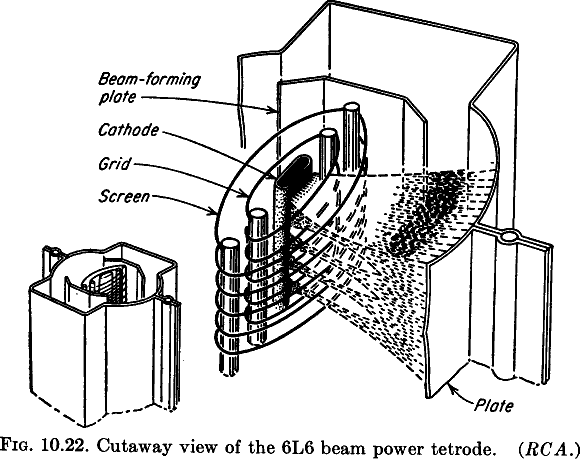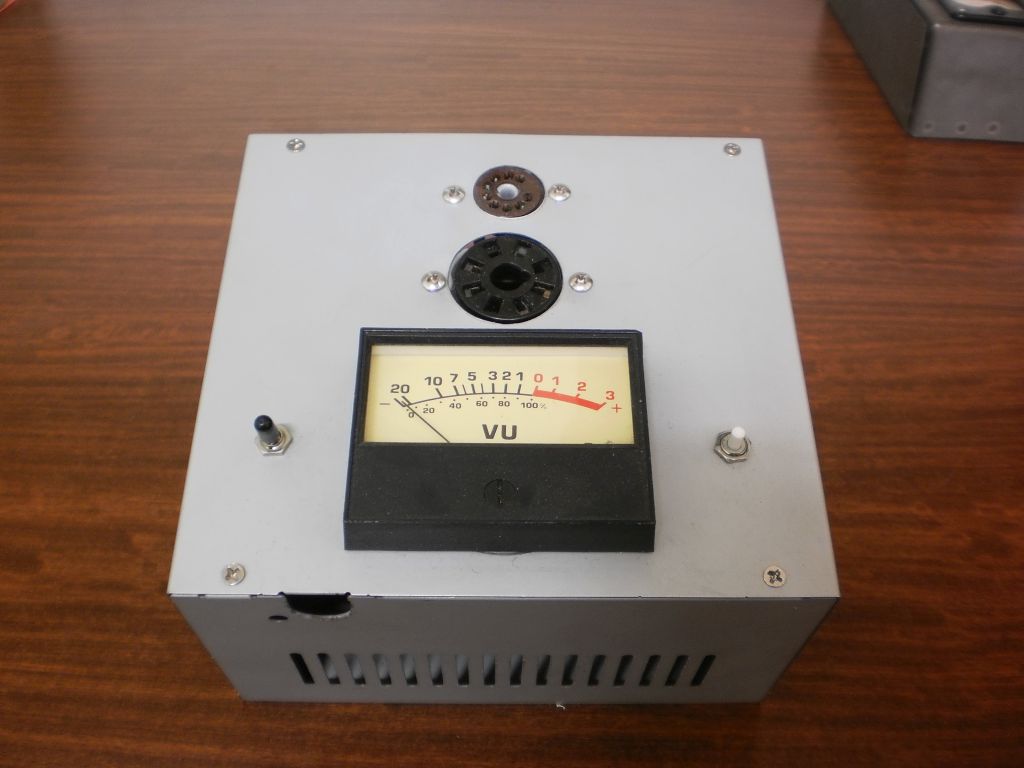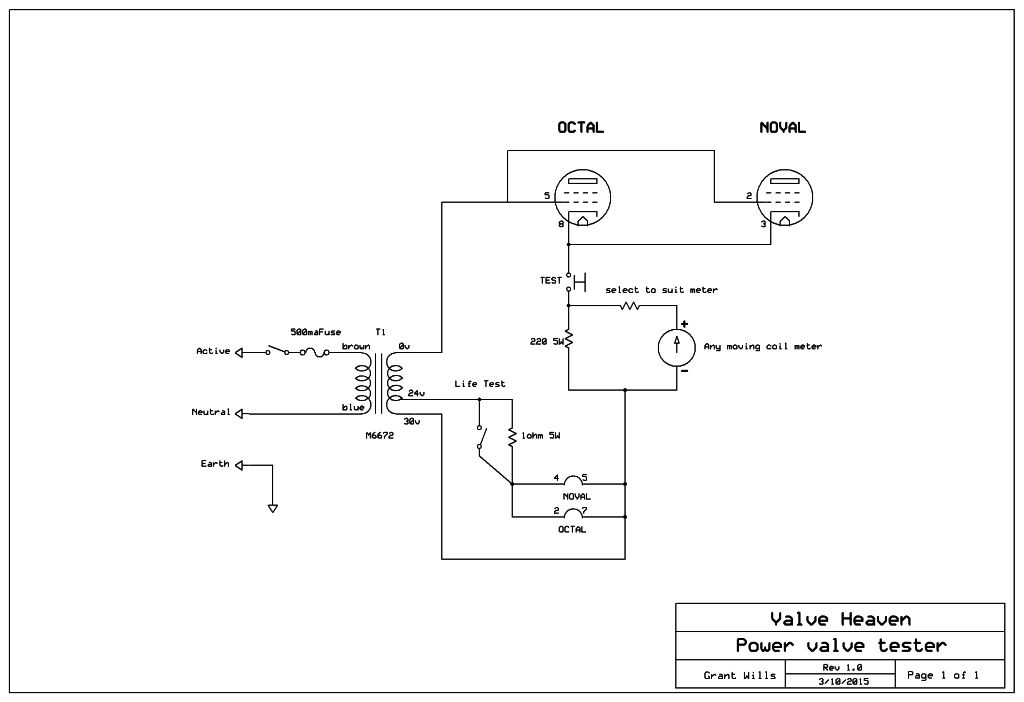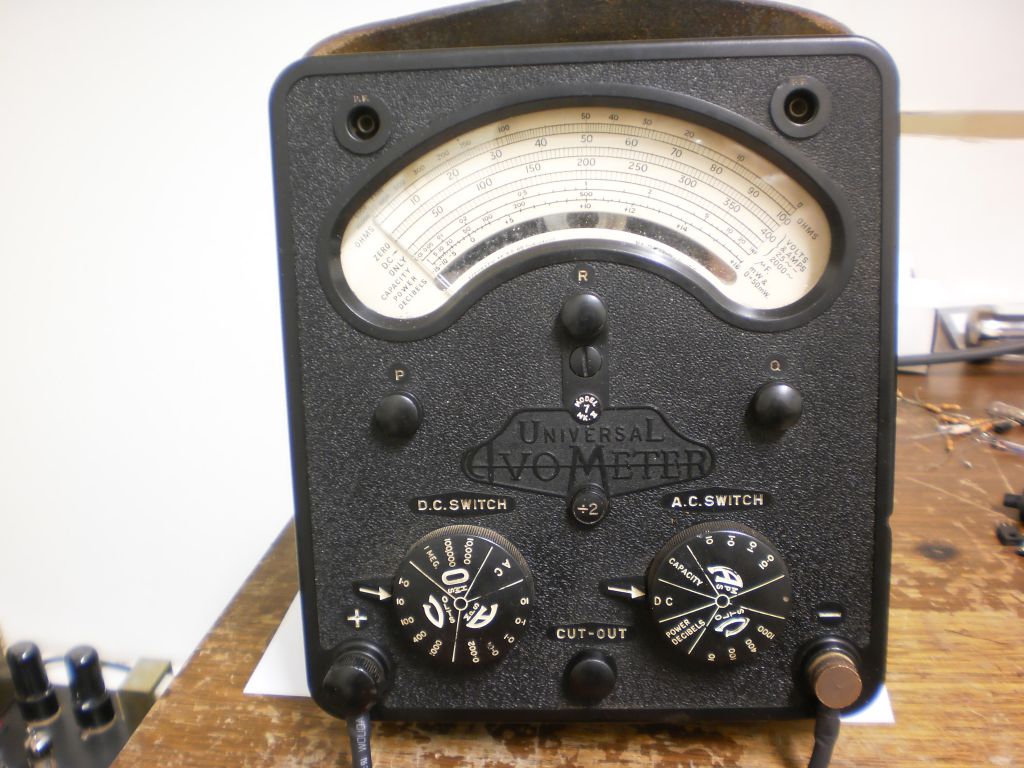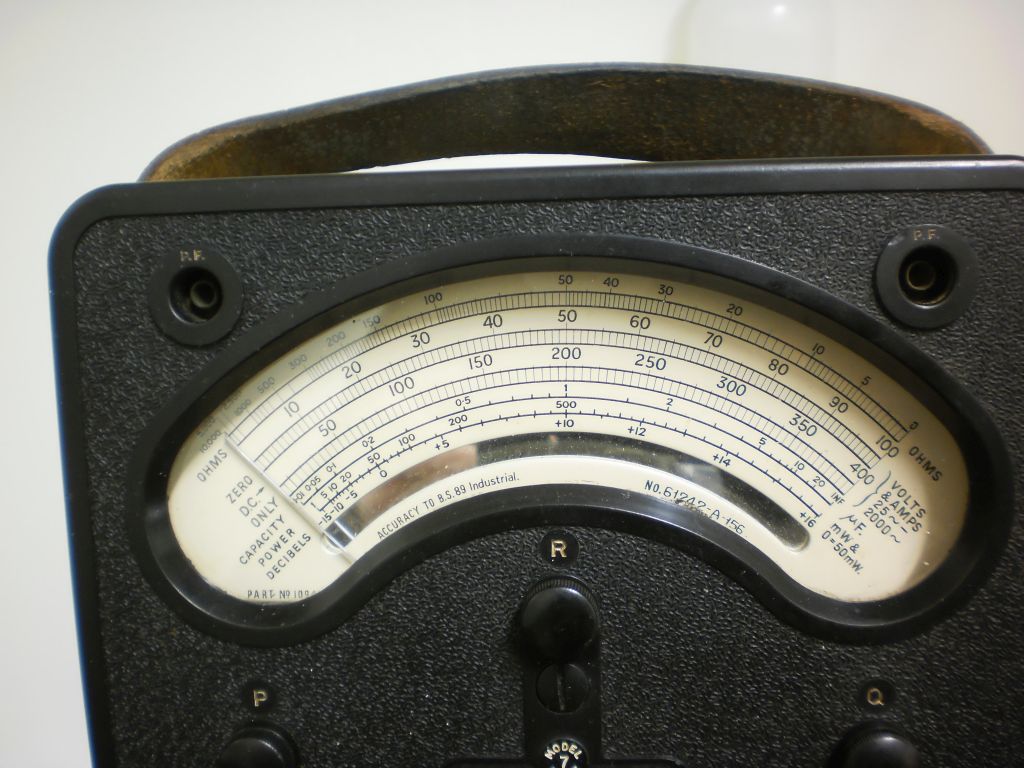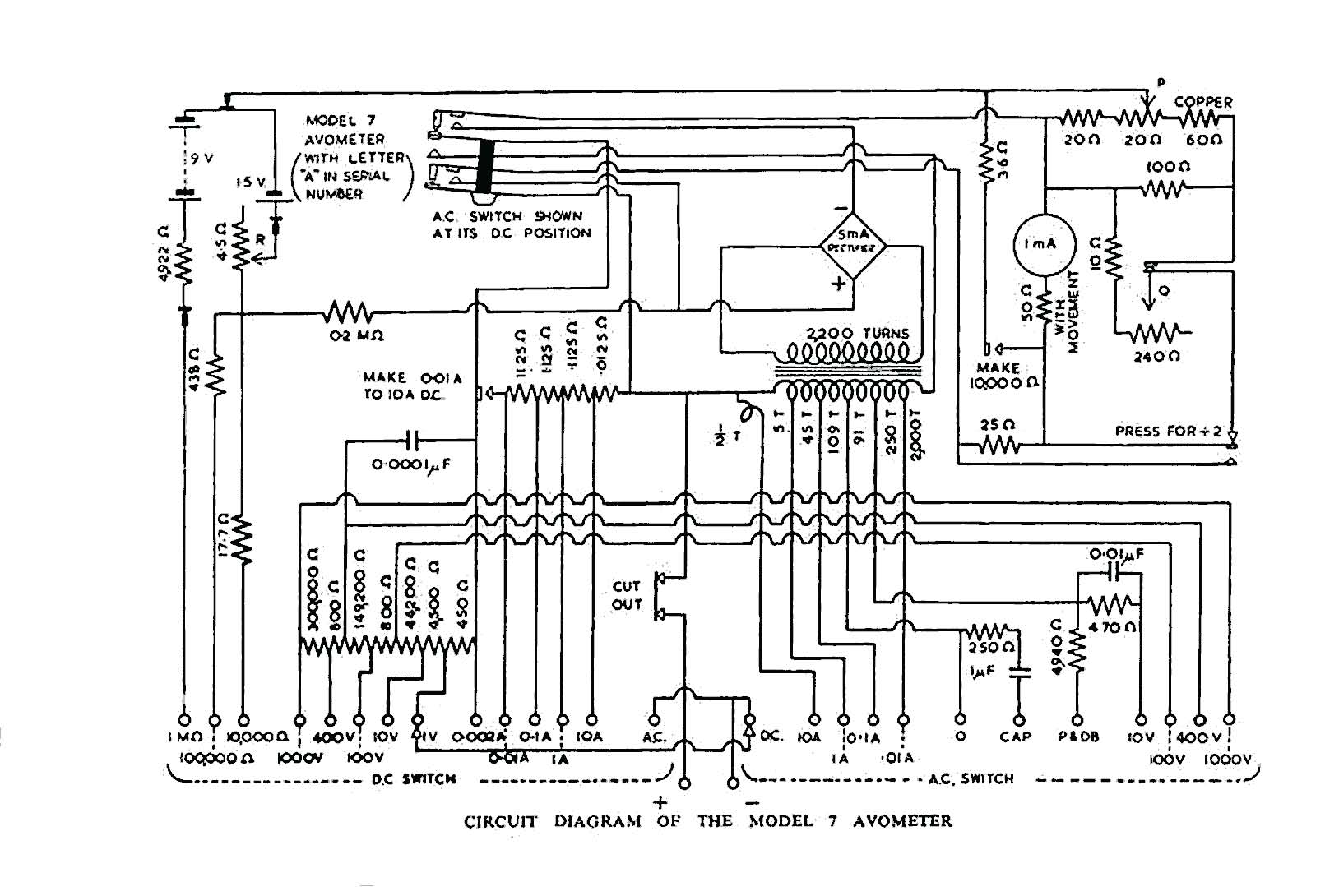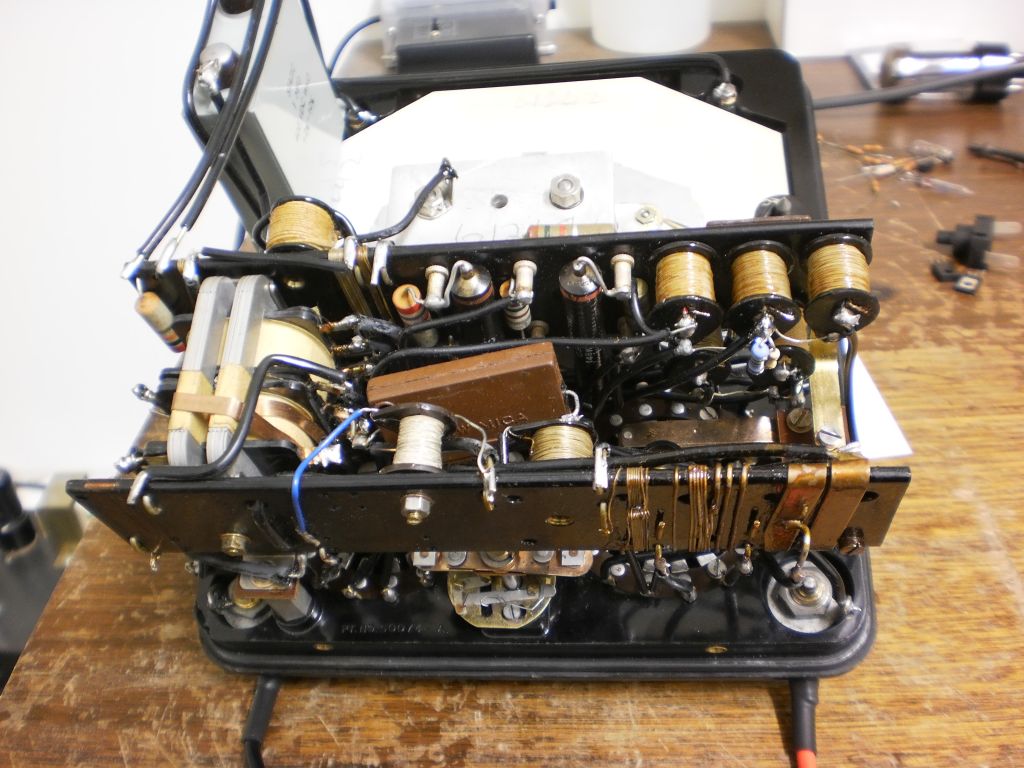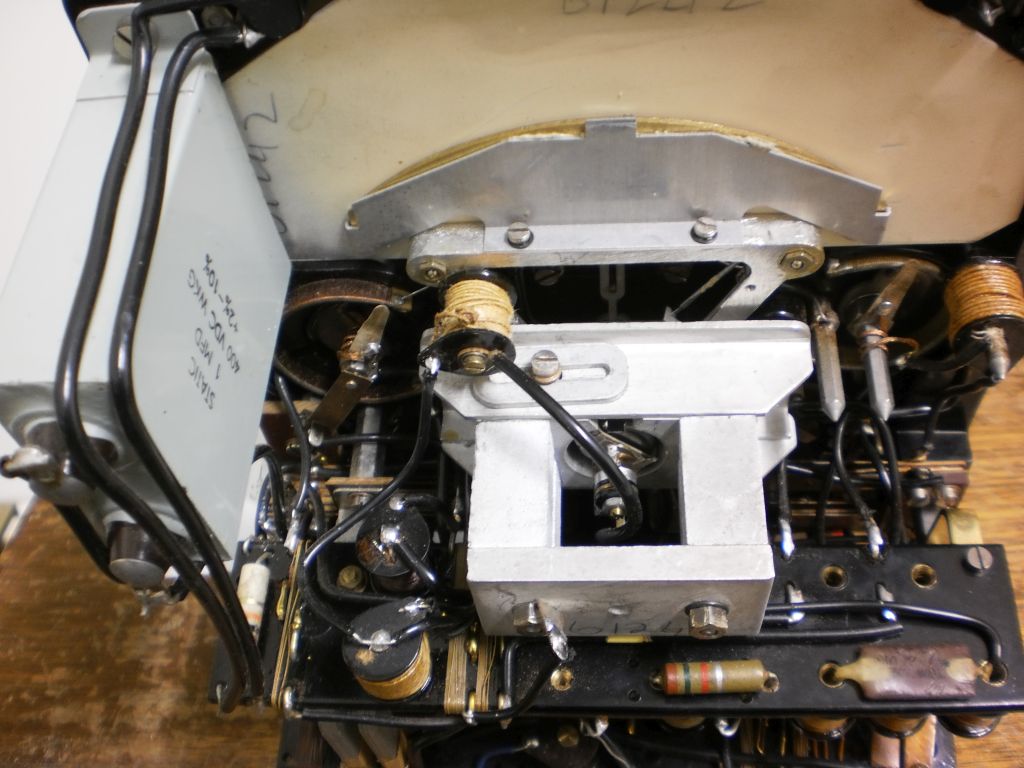A long time ago, I posted the design for an amp on an Australian forum that used valves that were developed for black and white TV service. It has surprised me that there have been nearly 12,000 views of the TV Special thread. Perhaps the interest in this amp has been fueled by large collections of old TV valves that have little use beyond their original application in TV service. The fact is that by far and away the largest consumption of valves (vacuum tubes) in history has been in consumer electronics – TV, Radio and record players. This has resulted in many valves used and NOS still being available very cheaply on Ebay and other online sellers.
My TV special amp used combination valves developed for video amplifier/sync separator application in B/W TVs. In addition, the TV Special also used a 6BX6 TV IF amplifier valve in the preamp. My Gilly amplifiers took advantage of another cheap TV valve – the 6GV8, which was used in the vertical deflection section of a TV set. The reality is that a valve is a valve, and beyond application in TV or Radio service, any valve can be used for other applications as long as their characteristics are suitable. It might surprise some to discover that the well regarded 6V6 power valve was used also as a vertical amplifier in TV sets. My own collection of TV valves continues to grow due to bargain purchases on Ebay, Amateur Radio Hamfest bargain buys and shed clearances. As a result, I thought I’d develop another “TV Special” amp.
As I was keen to make this a “junk box” build, I first decided to use my tried and proven 50W downlight transformer as an output transformer as I have heaps of them here. Having made this choice, the design then became a simple 5W single ended amp. As the output transformer reflects a 3.2K load to the output valve, I looked through my valve collection and datasheets to find a TV valve that is suitable for driving this lower impedance load.
A suitable candidate is the EL86/PL84. This is a similar valve to the EL84 and was developed to deliver more power with a lower HT supply. It was used in sound output and vertical output application in TV sets. The PL84 is the series heater version of the EL86.
Here is a page from the PL84 datasheet. You can see that this valve is ideal for the planned amp to drive a 3.2K load

The parts for this amp now began to be gathered

Having settled on an EL86/PL84 TV valve for the output stage, I was keen to continue the TV theme with a preamp valve that was also developed for TV service. In addition, I wanted to use series heater valves for this build as they simplify a power supply build. Series heater valves were developed for TV use in Europe and the US. Instead of the more familiar arrangement of 6.3V heater valves sharing a common heater voltage (6.3V), series heater valves shared a common heater current (typically 300mA). The valve heaters were designed with “controlled warmup” – meaning that they all came up to operating temperature at the same time and so balanced the heater currents.
So having selected a PL84 series heater output valve, I chose a PCF802 preamp valve. The two heaters in series could be supplied from a 24V transformer winding. The PCF802 was developed for low hum and microphony for TV line oscillators and so is ideal for the preamp in a guitar amp. Details here: http://www.r-type.org/addtext/add124.htm
Here is the schematic for the power supply for this new amp:

One power transformer does double duty to generate the HT for the amp and also provides power for the valve heaters.
An old Australian made A&R 240 to 48V C.T. transformer feeds a voltage quadrupler to generate around 250V DC HT. As mentioned the PL84 and PCF802 are “series heater” valves sharing the same current rating of 300mA. In this amp the two heaters in series require a total of 24 volts which is taken from the “cold” side of the multiplier input and the transformer centre tap. The PCF802 preamp valve heater is connected to the cold side of the multiplier input to minimise hum induction. This means that the valve heaters “float” at 1/2 HT (about +125V DC) but this is well within their max 200V heater to cathode voltage rating. A bonus of the valve heaters being elevated at a higher voltage than the cathodes is that hum is also minimised.
Here is the finished amp:

There is certainly not much to it – a couple of valves and transformers and one volume control. I have been pleased with the result – approximately 5W of output from the PL84. The one thing that stands out is how quiet the amp is – the amp is dead quiet until the volume is fully advanced and only then a small amount of hiss. This has probably been the quietest amp I have developed. I think this is due to the largish 470uf caps in the power supply but mostly due to the elevated valve heaters. Certainly not bad for a single ended amp as they lack the inherent hum rejection of a push pull amp.
As far as tone goes it sounds quite authoritative for its 5W of power with a strong mid range and rather nice overdrive when fully driven.
Here is the schematic for the amp:
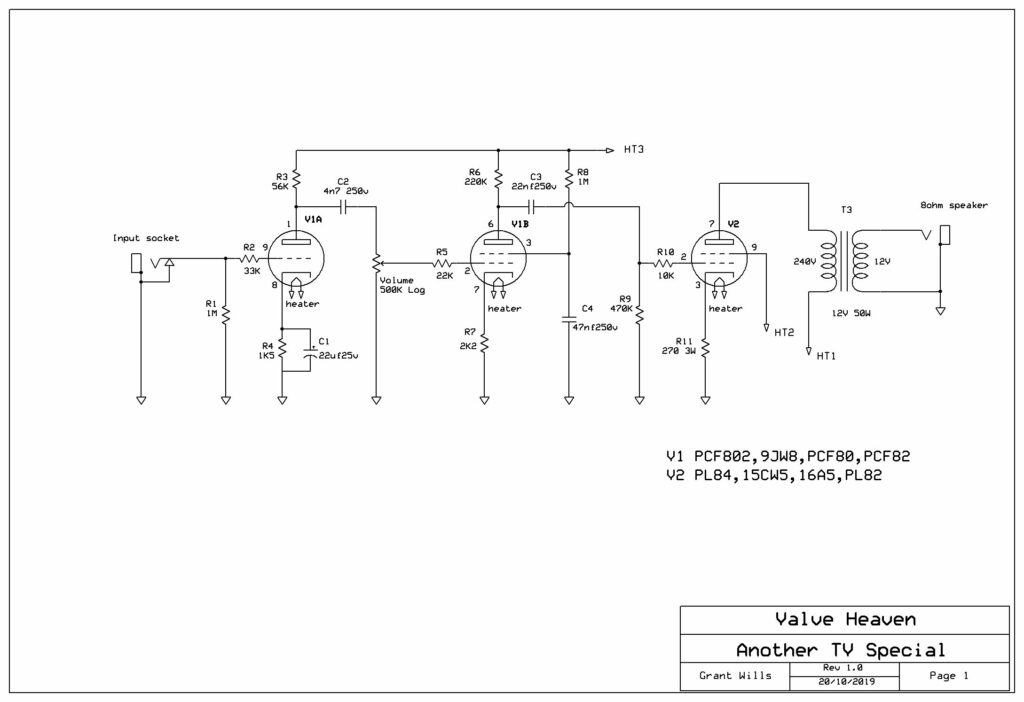
The PL84 in the output stage can be seen driving the halogen output transformer. The preamp uses the PCF802 triode/pentode as mentioned. I have also listed several other valves that can be substituted for the PL84 and PCF802. The PL82 (16A5) can be used in place of the PL84 and a PCF80 (9U8) for the PCF802. I decided to use a preamp arrangement using the triode section of the 6U8 triode/pentode valve essentially as a lower gain booster driving the pentode section which provides most of the amp gain. Both the pentode stage and the output valve have no cathode bypass capacitors and it is suggested that this helps shape the overdriven tone . Having said all that, it is certainly a very simple amp with quite an amount of output power and great tone – a good outcome from some old TV valves
Here is the amp underside – again, not much to it. The quadrupler voltage multiplier and components clustered around the two valve sockets.


